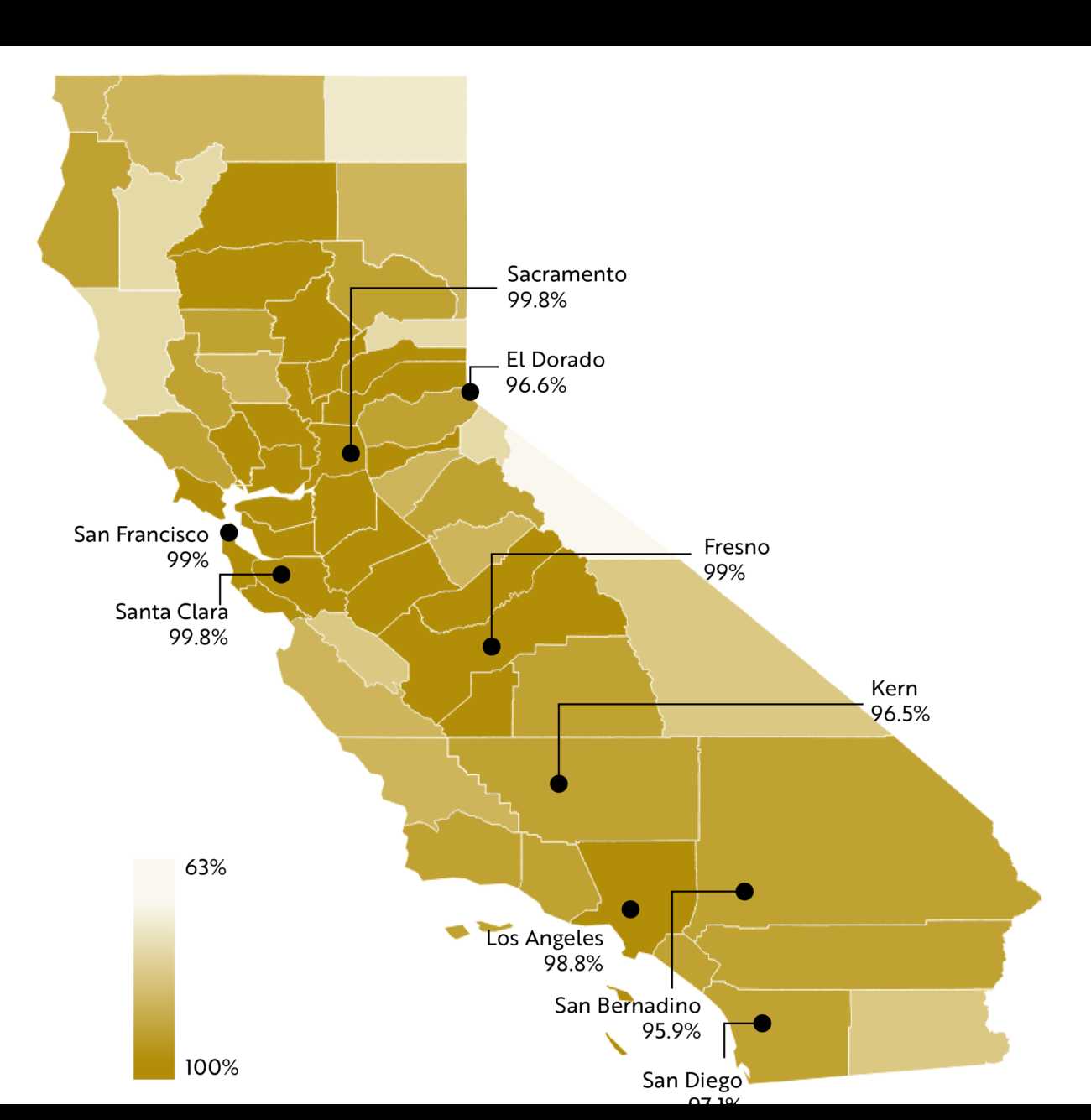Understanding Internet Access for Online College Success
California’s community colleges are an academic and career advancement hub for more students than any other higher education system in the nation. This year, Governor Brown’s budget included funding for what could become a unique economic mobility generator for workers across the state—a new community college campus, completely online, and developed to serve adults seeking career advancement through credentials and badges. The current proposal to create the 115th Online California Community College has reignited conversations for policymakers, researchers, and advocates about high-speed internet access in California.
Today, there is virtually no way to participate in a high-quality online course without reliable access to high-speed internet. A generous body of research finds that online courses have higher success rates when students and instructors can frequently interact within the learning community.1 This requires the use of message boards, live discussion, video conferencing, and other interactive technologies that rely on substantial bandwidth and high-speed internet.
In California, residents can connect to the internet in several ways. Wired connections such as DSL and cable modems are considered more technically reliable than wireless connections such as satellite and mobile data. Having access to a reliable and consistent internet connection can impact students’ success in online courses.
Wired broadband access rates are very high across California, but some communities still remain underserved. Understanding where these communities are and the opportunities to get them online at high speeds could have a significant impact on the success of a fully online community college.
Ninety-six percent of households in California have access to high-speed, wired broadband, according to the California Public Utilities Commission (CPUC). Rural and mountainous areas are the least served regions of the state for wired broadband service coverage (see map below.) While these figures suggest that our state is well-covered, there are two additional points to consider when it comes to internet access and providing a high-quality online college experience.

First, the Federal Communication Commission (FCC) recommends a higher threshold for high-speed internet than does the CPUC.2 Although not every household needs access to FCC-level speeds for simple things like browsing the internet, faster connections provide better experiences when using the internet for other very common activities like streaming video and audio, playing games, and connecting with others through live video—activities that also contribute to higher quality online learning experiences.
Second, living in an area where high speed internet access is available does not guarantee its affordability. In California, basic internet access from the leading internet service providers start around $20 per month, but CPUC- and FCC-level high speed broadband can cost substantially more. The cost to students of connectivity should be a factor in the design and implementation of an online college.
We know that stranded workers—the key population targeted for the 115th California community college—are more likely to face economic hardship than their peers with degrees. The costs and technical feasibility of connecting this group to high-speed internet cannot be overlooked; these two factors are critical implementation components of online learning. The kinds of technological advancements that the California Community College Chancellor’s Office has described as the goal of the new online community college will require students to have consistent and reliable access to high-speed internet. As details emerge around the development of curriculum, course design, and infrastructure needs, it is important that the connectivity and technological needs of students play a central role in the implementation and roll-out of this innovative mobility strategy. The California Community College Chancellor’s Office has prioritized increased equity throughout the community college system as one of several key goals laid out in its Vision for Success. The opportunity to provide economic mobility at scale is enormous and exciting—as development and planning continues, the considerations laid out here will be instrumental to the success of this proposal.
NOTES
1. Schrum, L. (2002). Dimensions of Student Success in Online Learning. Networking the Learner, 19-27. doi:10.1007/978-0-387-35596-2_2;
Swan, K. (2001). Virtual interaction: Design factors affecting student satisfaction and perceived learning in asynchronous online courses. Distance Education, 22(2), 306-331. doi:10.1080/0158791010220208
2. The FCC classifies “broadband” download speeds as 25 mbps (megabits per second) and upload speeds as 3 mbps. The CPUC classifies “broadband” download speeds as 6 mbps and upload speeds as 1 mbps.